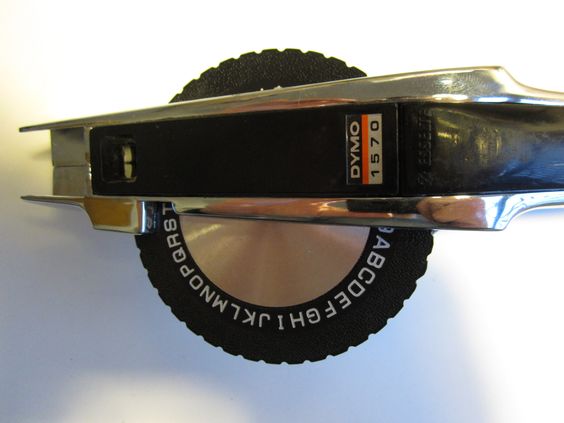Some of the most interesting mechanical solutions seem to have emerged from the transition period between manual and automated means of production — the process of adapting tasks long performed by hand to operate under machine power for the first time.
The initial iterations of the adaptation process usually result in endearingly anthropomorphic machines, since the process of abstracting human motions out of the process isn’t yet complete. (Examples include electric typewriters, sewing machines, automated assembly lines, etc.)
I’m interested in working through this process of converting hand power to mechanical power myself. A Dymo tapewriter represents an unlikely but possibly satisfying platform to turn into an automatic, electronic device.
I’m also interested in unintended and unknown physical consequences for actions taken online. The stream of new tag data on sites like Flickr could provide interesting source text, and would force the idea of a tag into the physical world — e.g. here’s a machine that involuntarily spits out sticky pieces of tape with letters on them that could, conceivably, tag real-world objects.
Thus, the TagBot. A mechanized, automatic Dymo tapewriter which scrapes new tag data from Flickr in real time, and generates labels accordingly.
A slightly more ambitious variant could be built with mobility in mind — you could position it somewhere in the city, and it would spit out tags from photographs taken in the vicinity.
Mechanically, several factors need to be accounted for:
- Rotation and indexing of the character wheel — a stepper motor would probably suffice.
- The space — a light squeeze on the handle advances the tape without printing a letter. A strong motor or solenoid could manage this.
- Character printing — a harder squeeze on the handle.
- Cut — a hard squeeze on another lever.
- Pull — a motor to pull the finished tag out of the printer.
- Tape reloading — Dymo tape rolls are pretty short, some kind of automated reloading system would be great, but probably beyond the scope / time available for the midterm.
Code and control will require the following:
- An Arduino to coordinate the motions of each mechanical element.
- An interface with the Flickr API to fetch the latest tags. (Either serially from a laptop, or directly over a WiShield.)
- Code to reduce the character set to those present on the character wheel.
